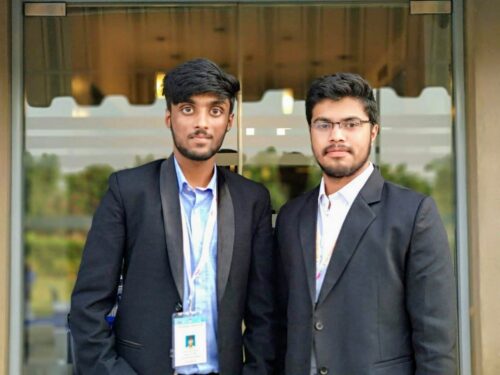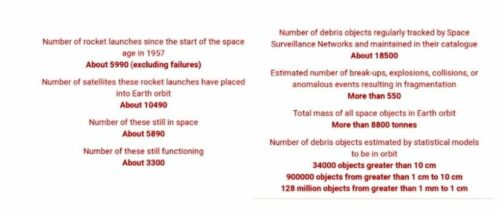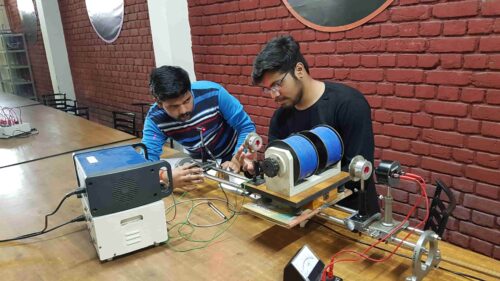You wouldn’t know it if you looked up at the sky, but thousands of defunct satellites and millions of debris particles, resulting from their breakage and accidental collisions, litter the space around our planet.
They are a menace to new satellites launched in low Earth orbits (LEOs). And because of their speed, even pieces tinier than a centimetre can cause extensive damage.
But now three young engineers, just out of college, promise to help space companies navigate the treacherous zone with their debris monitoring solution.
Anirudh Sharma (22), Tanveer Ahmed (22), and Rahul Rawat (21) are the founders of Digantara, an Indian space startup that was born in the corridors of a college in Punjab.
They are one of a handful of companies in the world and the only one in India tackling the space junk problem.
Finding Your Way To Outer Space
In 2017, Anirudh and Rahul were second-year computer science students at Lovely Professional University, Punjab. Tanveer, who was Anirudh’s school friend, was studying aerospace engineering at RV College, Bangalore.
“This is when we heard of ISRO’s student satellite launch program. It motivated us to set up a student club on campus dedicated to space science and satellites,” Anirudh says.
The club drew more than 60 students across various streams, from mechanical engineering to electronics. Meanwhile, Tanveer also started a satellite club at his own institute. The two groups worked closely, sharing their knowledge and experience with each other, in order to build their own nanosatellites.

But building a nanosatellite is an expensive affair and not knowing how serious they were, their university was initially reluctant to support such a student project. But that did not stop the teenagers. They learned all they could about satellite construction and space science. Later that year, they presented their concept notes on satellite smog detection at an ISRO conference — INAC, which won an award.
“It was a turning point for us. We gained credibility and our university started backing us,” recalls Rahul.
While building their nanosatellite, they met industry experts and space companies around the globe. One day, they got a request from a Latin American space agency to fabricate a satellite structure. The promised fee of $ 1000 could boost their nanosatellite project. It is only to formalise the payment that they registered the company.
“We had no idea we would be building a business,” Anirudh tells The Better India (TBI). Digantara, meaning outer space in Sanksrit, came into being on 19 December 2018. They made the commissioned structure in India and exported it to South America.
Since their nanosatellite was coming together, they were looking for different experiments to put in it. And finally, they found a problem worth solving, when Tanveer attended a space conference in Bremen, Germany, in 2018.
Running Out of Space
Since the dawn of the space age in 1957, over 10,000 satellites have been launched. Of which, only 3,300 are still operational. Explosions, collisions, and disintegrations have resulted in an estimated 130 million fragments orbiting Earth at high velocities. The table below from ESA shows a detailed breakdown of current debris statistics.

“These fragments are tiny, ranging from 1 mm to 10 cm in size, but because they are moving at speeds 12 to 15 times faster than a bullet, they can cause a lot of destruction to a satellite,” Rahul explains.
Most debris surveillance systems are ground-based, and can only track particles larger than 10 cm. With more satellites launching every day, the risk of debris collisions keeps rising and space companies want to avoid such expensive accidents.
Anirudh, Rahul, and Tanveer had an idea for a solution. It was a foolproof plan, yet a daunting one to pull off.

Eyes In The Sky
Digantara’s patented debris tracker, which is still under development, consists of a network of 40 nanosatellites that can detect and monitor even fragments as tiny as 1 cm. Each nanosatellite has a laser detector, which works like a radar. It shines a beam and locates the particles that reflect the light. All the imaging information is then consolidated into a 3D map of space debris.
Satellites can use this database to steer safely through space and avoid mishaps.

“Other than satellite companies, space insurance companies can use our data to analyse risk of accidents. The surveillance information can also be used for national defence,” Anirudh tells TBI.
After graduating from college last year, they have been incubated at IISc’s Society for Innovation & Design (SID).
According to C S Murali, Chairman at SID’s Entrepreneur Cell, “They have built everything from scratch.”
They now have a prototype which is being tested on-ground and the data processing component is also ready.
“In the next year, they should be able to test their system in space by launching one satellite,” Murali explains, adding that it is important for India to develop our own defence and space capabilities because of the amount of secrecy in this sector.
Watch Anirudh & Rahul Demonstrate A Prototype of Their Satellite Bus:
Edited by Yoshita Rao
No comments:
Post a Comment